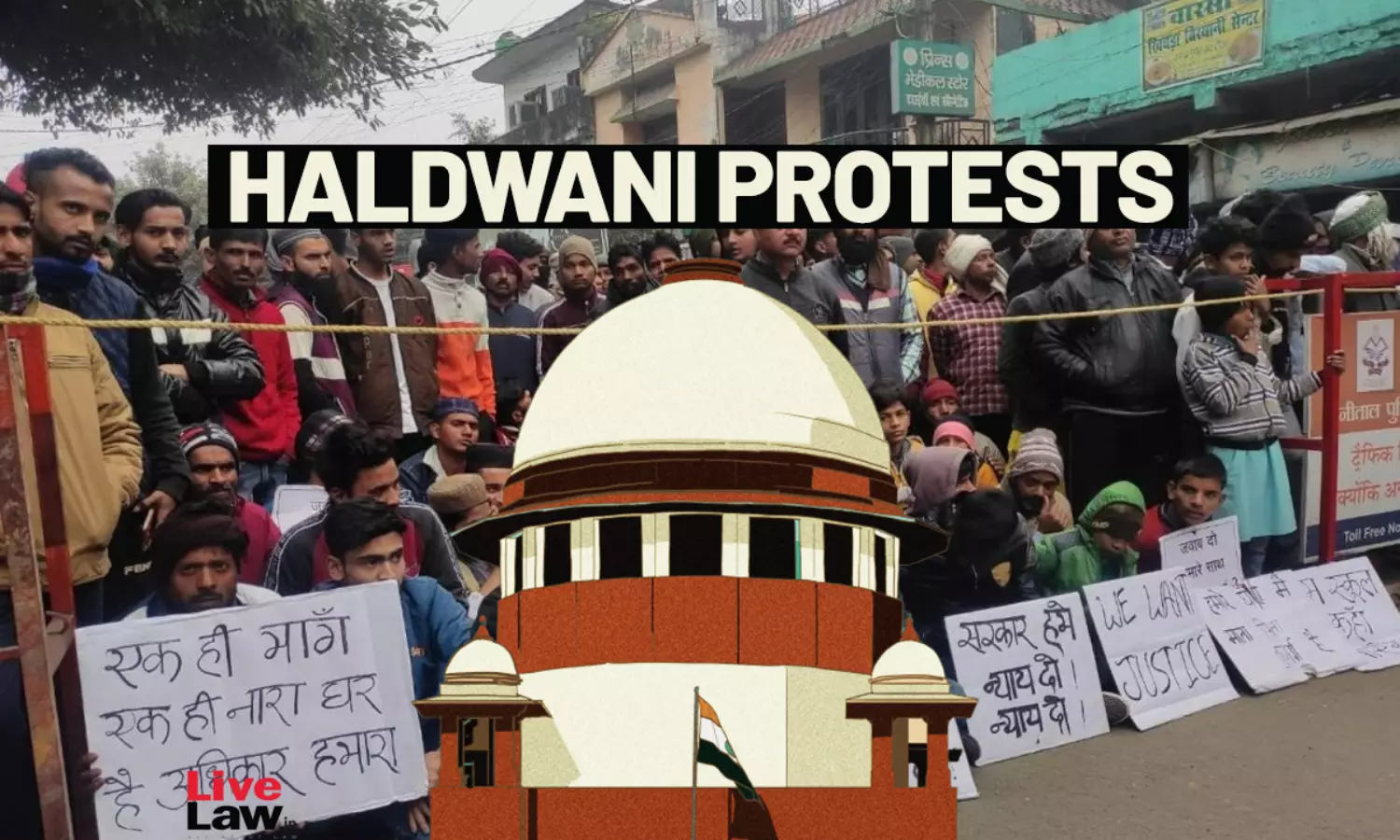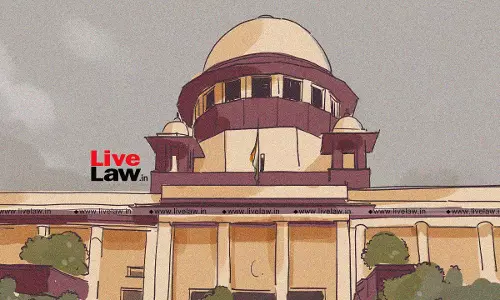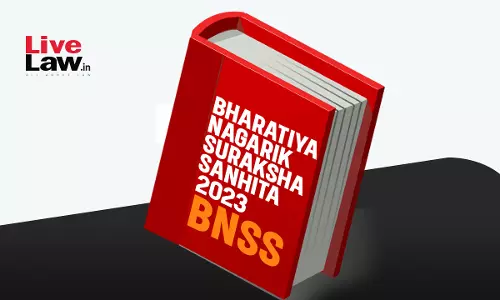Right To Shelter Can't Be Unconditionally Taken Away : How Supreme Court Stalled Unconstitutional Evictions In Haldwani

In India, the right to shelter has been one of the most controversial rights, because neither they are fully guaranteed nor the rehabilitation policies are very well implemented by the government. Right to shelter also serves as the basic unit of human settlements and as an Indicator of the duality of life of a city or a country's inhabitants. It reflects, among other things, the mobilization...
In India, the right to shelter has been one of the most controversial rights, because neither they are fully guaranteed nor the rehabilitation policies are very well implemented by the government. Right to shelter also serves as the basic unit of human settlements and as an Indicator of the duality of life of a city or a country's inhabitants. It reflects, among other things, the mobilization of resources and the distribution of space, as well as varied social and organizational aspects of the relationship between Government and society.
Recently, the Supreme Court has stayed the Uttarakhand High Court’s order in which had ordered the Railway and local authorities to demolish and evict more than 5,000 families within seven days. It was surprising to see that the High Court had given a free hand to the Railway Authorities in coordination with the District Administration along with “Para Military Forces” (if needed) to vacate/evict the land in question, that too after serving a week’s notice to the occupants.
In a nutshell, the Uttarakhand High Court, opined that the inhabitants in Haldwani did not have an enforceable legal right to the said land, which might be affirmative but on the other hand, the question of due process, rehabilitation and proportionality should have also been considered by the court.
Supreme Court’s intervention and staying the directions of the High Court: A much needed step
The eviction process was challenged before the Supreme Court and a bench comprising of Justice Oka and Justice SK Kaul stayed the directions issued by the Uttarakhand High Court. Even after state’s submission that the process was being followed with due process, the court raised its apprehension over the fact that – how can thousands of families be evicted within 7 days?
Justice Oka also raised apprehension over the fact that the High Court had recorded in its order that the authorities can also use “Para Military Forces” to vacate the said premises. With this, the Supreme Court has turned down the flawed directions issued by the High Court and reinforced the shelter jurisprudence which clearly states that if there is an eviction, then there should be some reasonable accommodation/rehabilitation.
“It may not be correct to say that paramilitary forces have to be deployed to remove people who have been living there for decades. People stayed there for so many years, some rehabilitation has to be given. There are establishments there, how can you say in seven days clear them off?” the court remarked while staying the High Court order
As Gautam Bhatia had written that this was an excellent opportunity for the Court to clearly set out the substantive notice-and-hearing and rehabilitation-and-resettlement principles and the scope of their application. Let us hope that this incident also paves a way for the Supreme Court to draw/set-out a policy for such instances where rehabilitation should be the rule.
Eviction without rehabilitation: An attack on right to shelter
No doubt, the process of eviction should be followed if there is a substantial need of land for development, but at the same time the nature of land should also be considered. For instance, in this case, the land has been occupied by people who have been residing there since decades and a fair process of rehabilitation should be followed.
With regard to rehabilitation and right to shelter, there are plethora of judgments which clearly states the right to life includes right to shelter. While upholding the importance of the right to a decent environment and a reasonable accommodation, the Supreme Court in Shantistar Builders v. Narayan Khimalal Totame (1990) 1 SCC 520, held that right to life would take within its sweep the right to food, the right to clothing, the right to decent environment and a reasonable accommodation to live in.
The court significantly remarked that “the difference between the need of an animal and human being for shelter has to be kept in view, as for the animal it is the bare protection of the body, for a human being it has to be a suitable accommodation, which would allow him to grow in every aspect – physical, mental and intellectual.”
Now, if we look at the Haldwani eviction case, the Railway and local authorities should at least provide the habitants with an alternative accommodation because more than the alleged “encroachment”, it is case about reasonable rehabilitation as the inhabitants have been residing there since decades. In this backdrop, it is pertinent to revisit Chameli Singh v. State of Uttar Pradesh (1996) 2 SCC 549, where the Supreme Court held that the right to shelter is a fundamental right available to every citizen and it was read into Article 21 of the Constitution of India as encompassing within its ambit, the right to shelter to make the right to life more meaningful.
In para 8 of the judgment, the court held:
"In any organized society, right to live as a human being is not ensured by meeting only the animal need of man. It is secured only when he is assured of all facilities to develop himself and is freed from restrictions, which inhibit his growth. All human rights are designed to achieve this object. Right to life guaranteed in any civilized society implies the right to food, water, decent environment, education, medical care and shelter. These are basic human rights known to any civilized society.”
With regard to encroachment, the Supreme Court in Ahmedabad Municipal Corporation v. Nawab Khan Gulab Khan held that no person has a right to encroach and erect structures or otherwise on footpaths, pavements or public streets or any other place reserved or earmarked for a public purpose, but the State has the constitutional duty to provide adequate facilities and opportunities by distributing its wealth and resources for settlement of life and erection of shelter over their heads to make the right to life meaningful, effective and fruitful.
The court also added that the deprivation of the right to life in that context would not only denude life of effective content and meaningfulness but if would make life miserable and impossible to live – “It would, therefore, be the duty of the State to provide right to shelter to the poor and indigent weaker sections of the society in fulfilment of the constitutional objectives."
While constructing the shelter jurisprudence, one cannot forget the directions issued by the Delhi High Court in Ajay Maken and Ors v. Union of India, where the court held that the right to housing is a bundle of rights not limited to a bare shelter over one's head. It includes the right to livelihood, right to health, right to education and right to food, including right to clean drinking water, sewerage and transport facilities.
Significantly, the Delhi High Court in Sudama Singh and Ors v. Government of Delhi, rejected the arguments tabled by the authorities that the jhuggi dwellers don’t deserve any rehabilitation. In this regard the court opined: “We find force in the submission of the petitioners that even if there is any such policy, it may be for those jhuggi dwellers, who deliberately set up their jhuggies on some existing road, footpath etc, but surely this policy cannot be applied to jhuggi dwellers who have been living on open land for several decades and it is only now discovered that they are settled on a land marked for a road under the Master Plan though when they started living on the said land there was no existing road.”
It is important to recall that once, the Supreme Court granted extension of time in eviction proceedings against poor dwellers, due to the rainy season in Madras and the court had rightly observed in K. Chandru Etc. Etc vs State of Tamil Nadu & Ors (1986 AIR 204): “Since Madras has a late monsoon, we direct that the pavement dwellers in the city will not be evicted before December 31, 1985. The State Government will do its best to provide alternative accommodation to those amongst them who are able to show that they were living on pavements before June 30, 1977. Insofar as the slum dwellers are concerned, the counter-affidavits filed on behalf of the respondents contain an assurance that it is the policy of the State Government not to evict such of them as were living in the slums prior to June 30, 1977, without providing alternate accommodation to them. That assurance will bind the Government. Insofar as the other slum dwellers are concerned, they too will not be evicted before December 31, 1985 unless the land on which any slum stands are required by the State Government for an urgent public purpose.”
A road to rehabilitation
The Haldwani eviction case has given a fine opportunity to the Supreme Court to monitor and direct the authorities to develop a policy for such eviction drives or demolitions. One cannot evict a fellow human out of his/their house without provide an alternative accommodation.
It is noteworthy to refer what the Court observed in Oliga Tellis case in reference to the intention of these poor dwellers -- “There is no doubt that the petitioners are using pavements and other public properties for an unauthorised purpose. But, their intention or object in doing so is not to "commit an offence or intimidate, insult or annoy any person", which is the gist of the offence of 'Criminal trespass' under section 441 of the Penal Code. They manage to find a habitat in places which are mostly filthy or marshy, out of sheer helplessness. It is not as if they have a free choice to exercise as to whether to commit an encroachment and if so, where. The encroachments committed by these persons are involuntary acts in the sense that those acts are compelled by inevitable circumstances and are not guided by choice.”
To conclude, it is noteworthy to note that shelter is something which is really an essential element of one's life, one may live without a job, but without a shelter, the dignity hits back. As the court had rightly observed in Shantistar Builders v. Narayan Khimalal Totame, that "the right to life would take within its sweep the right to food, the right to clothing, the right to decent environment and a reasonable accommodation to live in. The difference between the need of an animal and a human being for shelter has to be kept in view. For the animal it is the bare protection of the body, for a human being it has to be a suitable accommodation, which would allow him to grow in every aspect – physical, mental and intellectual." With this, we can only hope that there will be a proportional process which is adopted by the authorities. On one hand, we know that right to shelter is not an absolute right, but on the other hand, it cannot be taken away unconditionally.
(Areeb Uddin Ahmed, is an Advocate practising in New Delhi and occasionally writes on legal issues. He tweets at @Areebuddin14)




